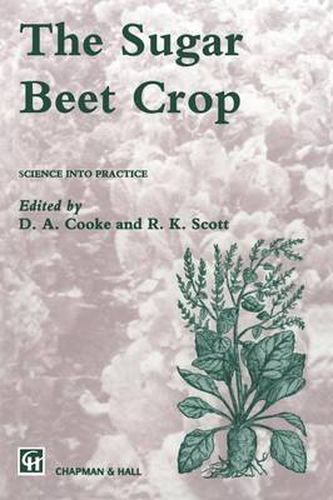Readings Newsletter
Become a Readings Member to make your shopping experience even easier.
Sign in or sign up for free!
You’re not far away from qualifying for FREE standard shipping within Australia
You’ve qualified for FREE standard shipping within Australia
The cart is loading…






This title is printed to order. This book may have been self-published. If so, we cannot guarantee the quality of the content. In the main most books will have gone through the editing process however some may not. We therefore suggest that you be aware of this before ordering this book. If in doubt check either the author or publisher’s details as we are unable to accept any returns unless they are faulty. Please contact us if you have any questions.
D.A. Cooke and R.K. Scott Sugar beet is one of just two crops (the other being sugar cane) which constitute the only important sources of sucrose - a product with sweeten ing and preserving properties that make it a major component of, or additive to, a vast range of foods, beverages and pharmaceuticals. Sugar, as sucrose is almost invariably called, has been a valued compo nent of the human diet for thousands of years. For the great majority of that time the only source of pure sucrose was the sugar-cane plant, varieties of which are all species or hybrids within the genus Saccharum. The sugar-cane crop was, and is, restricted to tropical and subtropical regions, and until the eighteenth century the sugar produced from it was available in Europe only to the privileged few. However, the expansion of cane production, particularly in the Caribbean area, in the late seventeenth and the eighteenth centuries, and the new sugar-beet crop in Europe in the nineteenth century, meant that sugar became available to an increasing proportion of the world’s population.
$9.00 standard shipping within Australia
FREE standard shipping within Australia for orders over $100.00
Express & International shipping calculated at checkout
This title is printed to order. This book may have been self-published. If so, we cannot guarantee the quality of the content. In the main most books will have gone through the editing process however some may not. We therefore suggest that you be aware of this before ordering this book. If in doubt check either the author or publisher’s details as we are unable to accept any returns unless they are faulty. Please contact us if you have any questions.
D.A. Cooke and R.K. Scott Sugar beet is one of just two crops (the other being sugar cane) which constitute the only important sources of sucrose - a product with sweeten ing and preserving properties that make it a major component of, or additive to, a vast range of foods, beverages and pharmaceuticals. Sugar, as sucrose is almost invariably called, has been a valued compo nent of the human diet for thousands of years. For the great majority of that time the only source of pure sucrose was the sugar-cane plant, varieties of which are all species or hybrids within the genus Saccharum. The sugar-cane crop was, and is, restricted to tropical and subtropical regions, and until the eighteenth century the sugar produced from it was available in Europe only to the privileged few. However, the expansion of cane production, particularly in the Caribbean area, in the late seventeenth and the eighteenth centuries, and the new sugar-beet crop in Europe in the nineteenth century, meant that sugar became available to an increasing proportion of the world’s population.